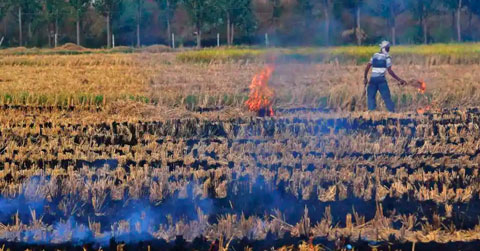On March 7 in Kyiv, the Ukrainian-American seminar “Open Burning in a National, Regional and Global Context” was held in the framework of the 2-day event “Reducing Open Agricultural Burning in Ukraine: Soil, Air Quality, and Public Health Paths for European Integration”, that was held in Kharkiv and Kyiv.
Head of the Board of Bioenergy Association of Ukraine, Georgii Geletukha in his report told about the significant potential of agro residues, such as straw and corn stalks, which could be used to produce energy instead of open burning in the fields and about the required investments in such projects and their payback (slide 11 of the presentation). Investment projects on straw baling, producing and selling of straw pellets, production of heat and power from agro residues are interesting for business.
Ukraine is made up of over 50% cropland area. Although open burning is banned, Ukraine has one of the highest numbers of detected fires in Europe and the surrounding countries. Burning before corn planting in the spring and after the wheat harvest in the fall is a culturally ingrained process. ICCI’s aim for this event was to help educate farmers on the benefits of no-burn and no-till agriculture while also facilitating connections between various stakeholders. A number of representatives from various waste-to-energy companies were in attendance in Kiev and showed interest in utilizing the excess agricultural residue after observing how much energy is being lost via open burning.
Monitoring and Mapping Open Burning in Ukraine – Dr. Joanne Hall1, Dr. Louis Giglio1, Dr. Wilfrid Schroeder2, Dr. Sergii Skakun1, Michael Humber1, Dr. Jessica Mccarty3. 1 – University of Maryland, Department of Geographical Sciences, College Park, Maryland, USA; 2 – NOAA/NESDIS/OSPS Satellite Analysis Branch, College Park, Maryland, USA; 3 – University of Miami, Department of geography, oxford, Ohio, USA. Bioenergy development in Ukraine – Georgiy Geletukha, Bioenergy Association of Ukraine
